
Starting off in a comfortable outfit. Jenky old jeans, low cut tank, bed head, not interview ready at all!
FBLA, Future Business Leaders of America. A flash-non-fiction story: A high school friend and I joined the FBLA statewide competition without even reading the requirements for our project. We showed up in any old outfit, touting a business plan for a non-profit charity and gave away apples to the judges. To our surprise, on arrival, everyone had projects wrapped in tin-foil for the "millenium" theme to which we were unaware, and were dressed in "boring business" attire. When we got our score cards back, Nadine and I were disqualified from our segment, not for our mal-aligned project, but for "inappropriate dress" based on her "open-toed shoes."
Walking a mile in certain shoes is not desirable. Do not compromise comfort for a willingness to please.
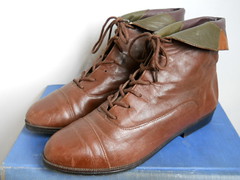
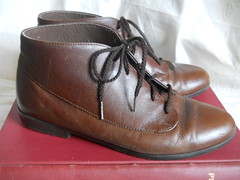

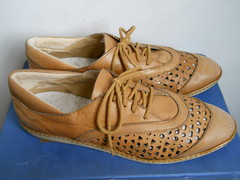
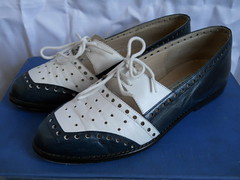
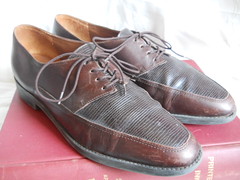
Oxfords are a safe shoe-bet for business. They come in many colors and designs, including cut-outs and high-tops or ankle boots, men's and women's. They aren't too clunky, and they look great with skirts and dresses as an alternative to heels.
That day, the truth about business dress became clear. It appeared to this young compartmentalizing eye as boring because the goal is to create a shared platform. In this way business clothing "codifies similarities," removing intimidation and separation from potential clients, bosses and colleagues. Seeing similarities and/or not distracting with our differences allows us to stay focused and efficient in the workplace. In a world where everyone has their differences, at least we can come together through business dress.
What is the focus?
The end to the means of an interview is (hopefully) the work that we do as a result of having a job. The quality of the work produced is a product of what is in our minds. The seat of knowledge should be emphasized using color and accessories in a way that will draw eyes to the face, not away. Men wear ties to lead the gaze to the face. Jewelry shouldn't be excessively large, and color should be brought to the face with make up that accents clothing. Eliminate top scraggles by having hair in an up-do.
Here are a few tips on how to french-braid hair:
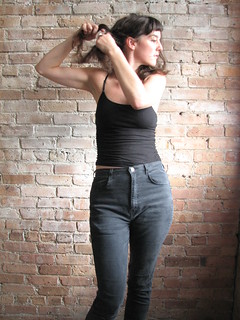


This is french braiding in a crown. One can learn easily how to do this on any braiding website, but the main key is shown in the middle photo.
1. Braiding is about muscle memory. Remember which fingers are pulling new hair. To keep it simple, only add hair with the same fingers and hands. Practice being rhythmic.
2. Once braided so far in one direction, how can the hands move onto the other side of the head to finish the braid with out letting go? This technique is dubbed "jumping rope" where the elbows get thrown over your head and the braid slightly twists.
3. Continue the braid on the other side of the head, adding hair until there isn't any more, and braid the ends, wrapping it around and securing it with a barrette over the gap from where it was started.
Already appearing more stable-minded
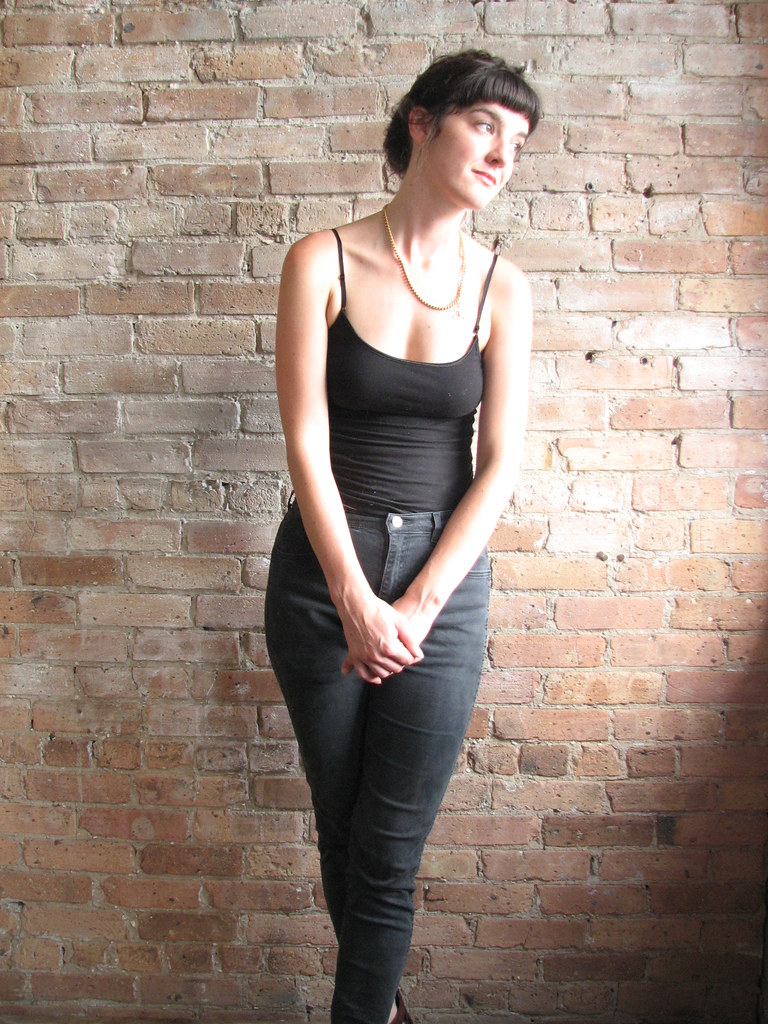
As a school teacher children focus less on their work when they want to know if the cowboy boots and braids point to a personal history as a farmer. Figuring out how to keep children concentrated on their work and not on today's outfit fortifies your goals.
Get with the Program:
There are numerous ways to screw up the dressing aspect of the interview. Over-thinking things is a common mistake, and though one may be stretching oneself to create a first impression that looks good and conforms, it is easy to blur the lines with "a night out" or "wall flower."
Wrong #1: Be too boring
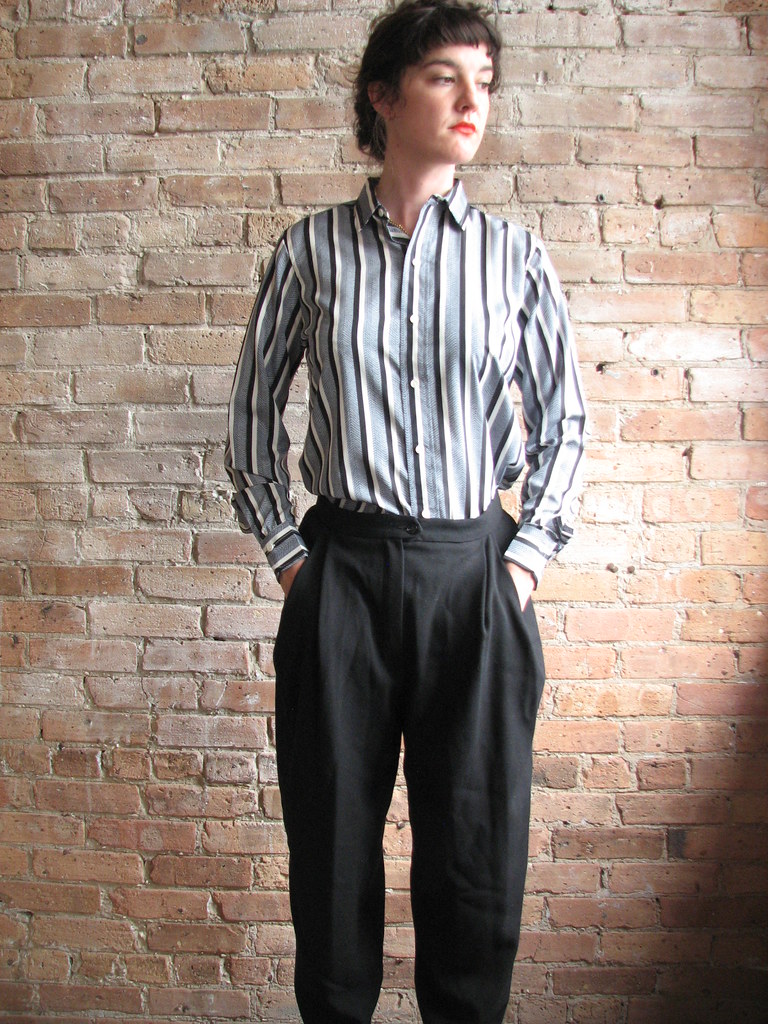
This is a completely acceptable classic business shirt and trousers, however it is baggy and rather unmemorable. This is not a BAD choice, however it lacks focal point and accessories, and these clothes do not fit the figure in a flattering way.
Fix #1: Add Some Class
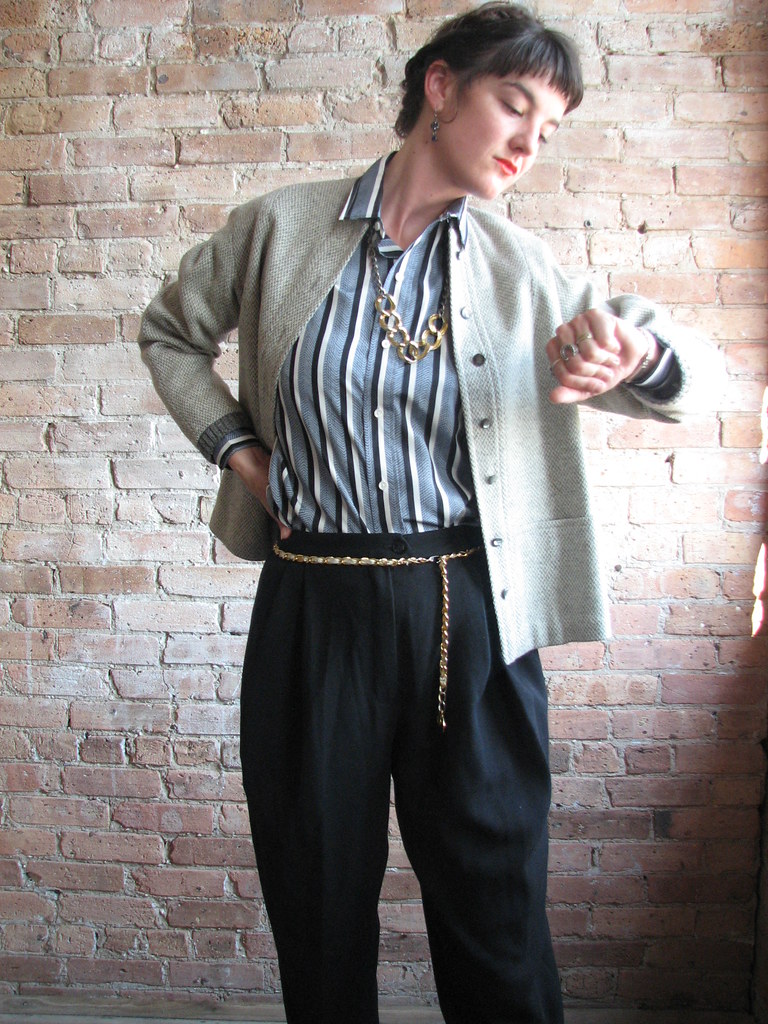
A simple coat brings this up a notch and completes the outfit. A nice necklace, chain belt, subtle earrings, and a bracelet or watch spice up "boring basics."
Wrong #2: Be Too Revealing or Too Distracting
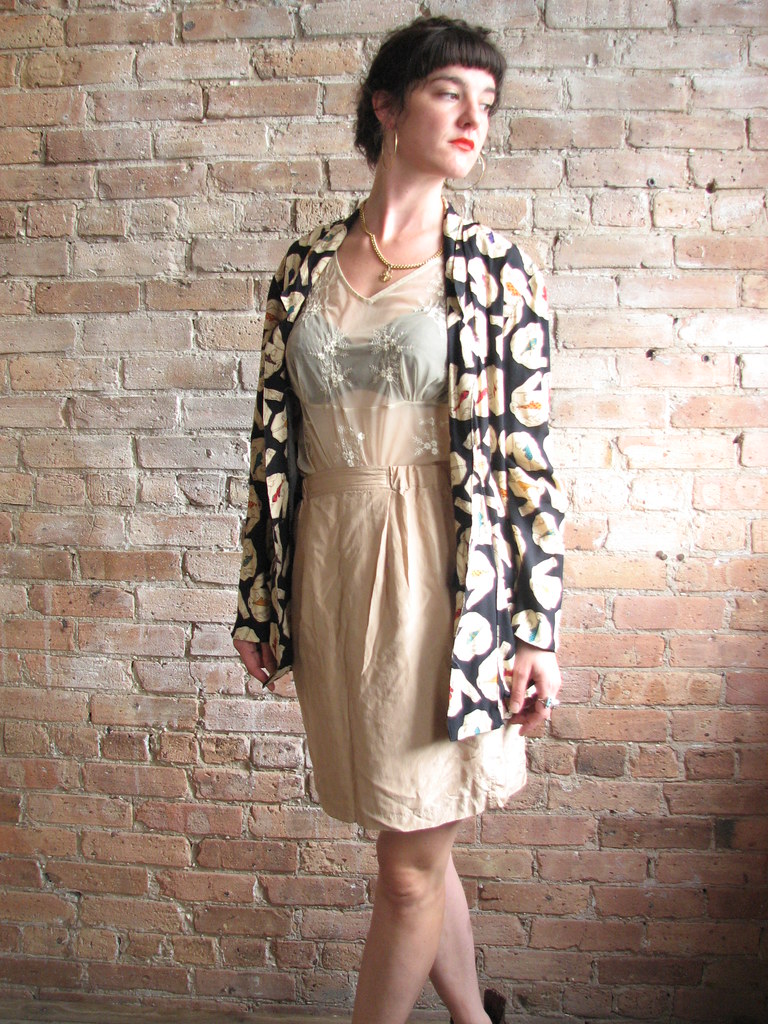
Sadly, despite current trends in lace and sheer, it is not appropriate to distract and excite the interviewer. Additionally, wearing wild patterns on the exterior can keep the eyes off of the main focal point: your face. Symbolically these overly busy motifs, despite being in classic cuts, could reflect poorly on your personality by revealing your willingness to indulge yourself and others in diversions.
Fix #2: Keep Calm

Not all patterns are bad. Here, a wildly patterned shirt with an appropriate neckline is paired up with a navy cropped coat and a neutral mauve silk skirt. The symbolic reading of a busy pattern under a calm neutral block color is that the busy mind keeps a cool facade. The neckline of the coat leads the eye back up to the face.
Wrong #3: Texture Clash
While this outfit is made of fine fabrics in appropriate cuts and fittings, there is over emphasis of the tops through texture clashing. Granted this is not the worst offense, each exquisite piece is decentralized in comparison to the defining space; another exquisite piece.
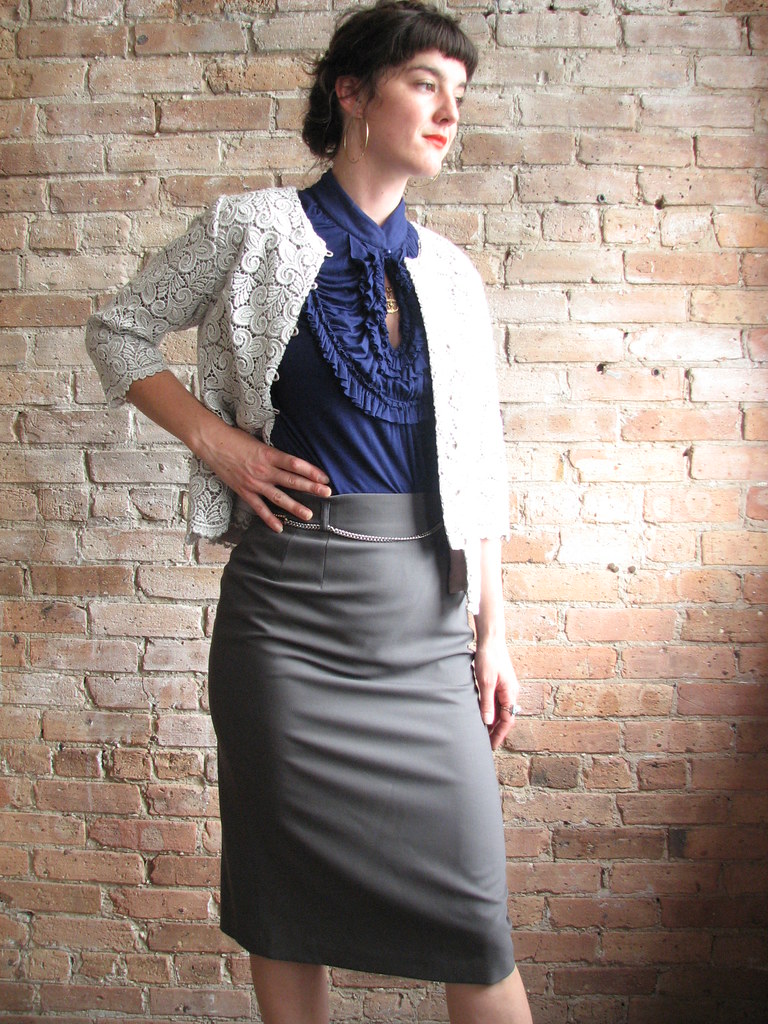
Fitted, comfortable, length-appropriate skirt, richly textured light-weight neutral silvery swing coat, and a deep violet dramatically bibbed tank provide a lot to look at, perhaps too much for a premier interview.
Fix #3: Local Focal
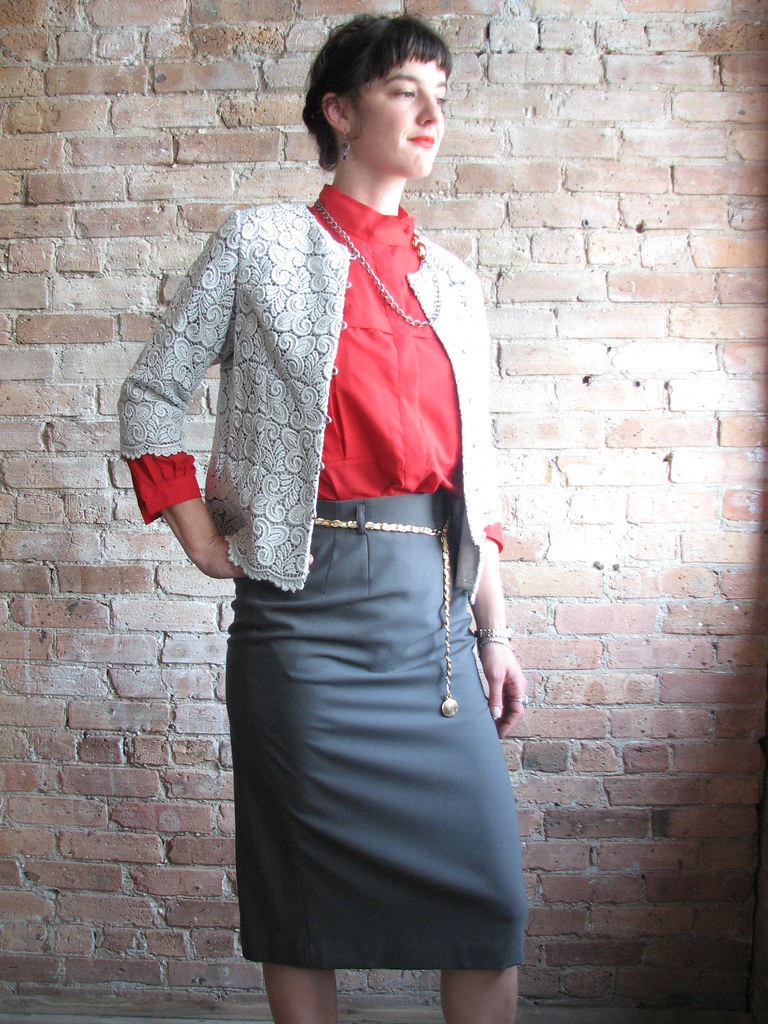
Focal points are made visible with contrast. Define your best piece by setting it off next to a less competitive texture or pattern. Switching either the jacket or the shirt makes this outfit a win because it isn't too flashy and emphasizes the key peice.
Know Your Goals, Dress for the Role:
Clothing is an expressive medium with transformative aspects that can be advantageously employed, effecting not only how other people see us, but how we feel about ourselves. Without sweatpants on, getting out of bed and sitting at a desk is less difficult, with the proper business clothes the mind becomes unoccupied with appearance and allows us to focus on the job at hand. In addition, how one looks and how one feels are reciprocally determined, or are equally affected by one another; if we look confident, we will feel confident and if we feel confident, we will look confident. Finding ways to control other peoples impressions as well as our own impressions of ourselves is the key to understanding "The Art of Getting Dressed."
Fix #3: Local Focal

Focal points are made visible with contrast. Define your best piece by setting it off next to a less competitive texture or pattern. Switching either the jacket or the shirt makes this outfit a win because it isn't too flashy and emphasizes the key peice.
Know Your Goals, Dress for the Role:
Clothing is an expressive medium with transformative aspects that can be advantageously employed, effecting not only how other people see us, but how we feel about ourselves. Without sweatpants on, getting out of bed and sitting at a desk is less difficult, with the proper business clothes the mind becomes unoccupied with appearance and allows us to focus on the job at hand. In addition, how one looks and how one feels are reciprocally determined, or are equally affected by one another; if we look confident, we will feel confident and if we feel confident, we will look confident. Finding ways to control other peoples impressions as well as our own impressions of ourselves is the key to understanding "The Art of Getting Dressed."

No comments:
Post a Comment